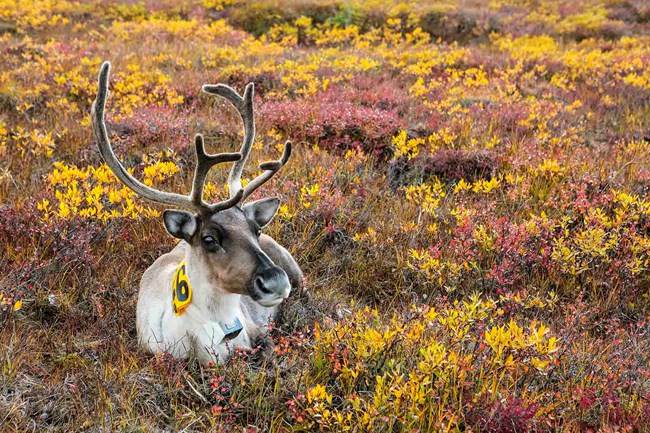
When it comes to monitoring animal species in the Central Alaska Network, we chose species that are spread across the trophic levels in park ecosystems. By doing this we will have a better chance of observing change wherever it may come. We can try to forecast what kinds of change may occur, but it's harder to predict precisely where it will happen, or what form it may take.
Caribou occur in all three Central Alaska Network parklands and are found in four separate herds: Denali, Mentasta, Chisana, and Fortymile. In the context of the monitoring program, they represent the grazers of the trophic levels, as do Dall’s sheep and small mammals.
While caribou represent the role of a grazing animal in the conceptual model of the network program, they are also of interest for monitoring for several other reasons. First, three of the four herds found in Central Alaska parklands have experienced significant recent declines and one of those, the Fortymile herd, has now reversed it’s trend and is increasing. Second, subsistence harvest on two herds (Chisana and Mentasta) has been curtailed due to conservation concerns; providing the opportunity for subsistence activities is a directive for NPS lands in Alaska. Third, one herd (the Nelchina) is the subject of intensive interagency management, including the control of predators. Fourth, one herd (the Chisana) that straddles the U.S.-Canada border is the subject of an international cooperative management agreement. In addition, the long-term research and monitoring of caribou on parklands provides a background against which future patterns may be compared.
We monitor caribou in Denali and Wrangell-St Elias national parks and preserves to:
- Determine changes in abundance, distribution, and demographics of caribou in the Central Alaska Network.
- Estimate calf survival and recruitment in the Central Alaska Network.
- Estimate mortality of caribou in and around the Central Alaska Network.
Contact: Layne Adams, Denali National Park and Preserve
Contact: Kyle Cutting, Wrangell-St Elias National Park and Preserve
Learn more
Last updated: March 6, 2025
